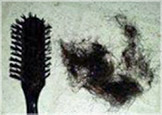
Illustration: Jay Daniel Wright for Bloomberg Businessweek
Don’t Miss Out — Follow Bloomberg On
Facebook Twitter Instagram YouTube
Recommended
MSNBC – ELECTION COVERAGE — MSNBC Donald Trump Town Hall — Pictured: (l-r) Donald Trump and Chris Matthews during the MSNBC Donald Trump Town Hall on Wednesday, March 30, 2016 from the University of Wisconsin in Madison, Wisconsin — (Photo by: Tim Hiatt/MSNBC/NBCU Photo Bank via Getty Images)
Trump Back on Attack Demanding Kasich Exit, Predicting Recession
A customer sets up his thumb print on his newly purchased, Apple Inc. iPhone 5s smartphone at Reliance Digital Retail Ltd, in New Delhi, India, on Saturday, November 2, 2013.
Apple’s Push to Flood India With Used iPhones Ignites Backlash
The sun sets beyond an oil pumping unit, also known as a “nodding donkey” or pumping jack, at a drilling site operated by Tatneft OAO near Almetyevsk, Russia, on Friday, July 31, 2015. Eleven months of surviving with oil below $100 have left Russia hardened enough to endure a monthlong drop to $40 a barrel, a survey of economists showed. Photographer: Andrey Rudakov/Bloomberg
Oil Speculators Bet Rally’s Over as Doubts Grow on Output Freeze
Meet Tesla’s Stunning New Model 3
Share on Facebook
Share on Twitter
Men and women dealing with balding—40 percent of us by age 40—confront the mirror with a clinician’s eye, vow to cut back on vices (more exercise! less booze!), and appraise the hairlines of the follicularly blessed with envy. Hair loss is a reminder that the human body can’t stay young forever, even though we try. Prevention is a $3.5 billion business in the U.S.
Relief-seeking sufferers have a few standard options. The American Hair Loss Association recommends Propecia as the first line of defense and Rogaine, the industry’s sales leader, as the second. Then there are easy-to-buy oral supplements such as Biotin and Viviscal, pricey LED light combs that enhance blood flow to the scalp, as well as powders and sprays. All these treatments have drawbacks: Rogaine may cause skin irritation, Propecia can lead to impotence, supplements and LED treatments are only marginally effective, and powders and sprays rub off. Follicle transplants work, but they cost thousands of dollars and require days of recovery.
Lars Skjoth thinks he has a better solution. Skjoth is the handsome, charismatic, and well-coiffed founder and chief scientist at Harklinikken. (That’s “hair clinic” in Danish, though that sounds less impressive than the hard-to-pronounce foreign name.) He’s got clinics in Denmark, Dubai, Germany, and Norway. After opening a U.S. test facility in Tampa in 2013, he and his team recently began taking clients in—where else?—Beverly Hills, as well as through virtual consultations.
A treatment based on algorithms and tonics
Harklinikken is perhaps best described as a hair-loss fraternity, and the exclusivity is part of the draw. There’s a screening process that weeds out potential pledges with autoimmune illnesses such as alopecia or baldness from scarring, or anyone unlikely to see a minimum 30 percent increase in growth; Skjoth estimates he rejects up to 30 percent of potential customers. “Many of them we spend lots of time on before we reject them,” he says.
Those with worthy domes are quizzed on age, height, weight, hereditary history, diet, exercise, stress levels, and smoking and drinking habits. Then things get technical: That information is entered into an algorithm Skjoth has been tinkering with for 20 years, which determines the formula of a proprietary tonic shipped to the client. The extract is applied topically—twice at half-hour intervals, usually before bed—then shampooed out two times the next morning, which a consultant demonstrates via Skype. After a $50 consult, the treatment, including special shampoos, costs as much as $120 a month. Skjoth will say only that the tonic is “based on cow milk and plant derivatives.”
Periodic Skype sessions are about compliance as much as customer service. Wayward clients—those who aren’t religious about applying the tonic or aren’t helping their cause with lifestyle choices—are shown graphics charting the correlation between sticking with the program and its efficacy. The company says that after four months of treatment, most people regain at least 30 percent of lost density and some as much as 60 percent. That’s far beyond results they’d get from existing treatments.
The before-and-after photos are persuasive: Imagine someone who looks like Bruce Willis suddenly channeling Owen Wilson. Of course, it’s easy to cherry-pick results, especially when about a third of potential clients whose preexisting conditions might weigh down those percentages are weeded out at the beginning. In February, Marie Claire published a first-person report on Harklinikken. “My personal sign the treatment’s a success?” asked author Ning Chao. “I’m no longer self-conscious that my scalp is showing.”
The clinic claims rock stars and royals as success stories (it won’t divulge names or any particulars about its financials), in addition to magazine writers. I gave the treatment a try for this article, but my compliance so far has been somewhat questionable: I kept falling asleep before the second nightly application.
[“source-Bloomberg”]

